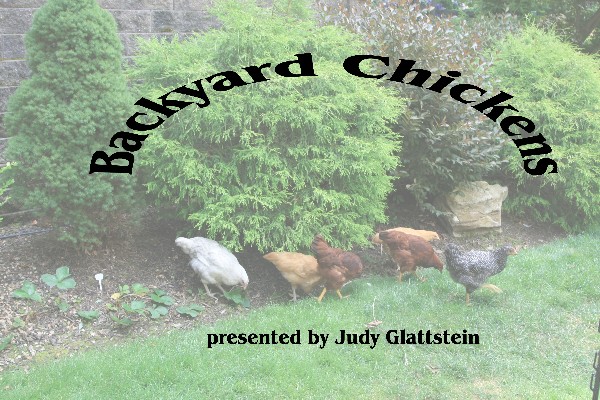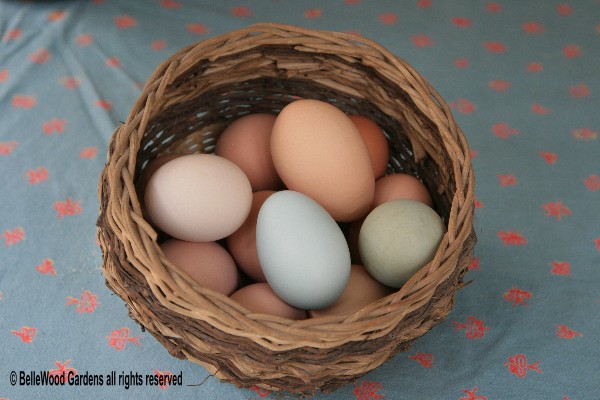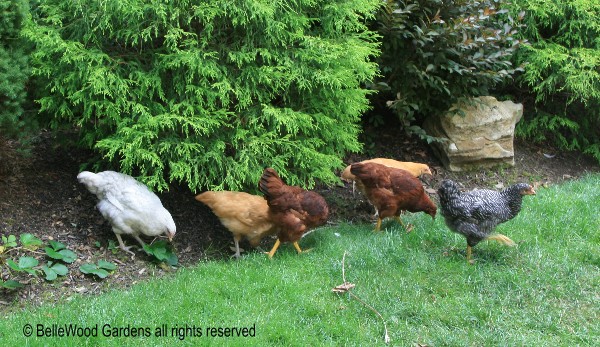
Thursday, 31 March 2011
Backyard Chickens
Last year when I was proposing classes for Spring 2011 at the New York Botanical Garden I had an idea. Locovore classes = eating local, as local as your own backyard vegetable garden = are very much in the news. How about, I said, we kick it up a notch and I'll teach a class on backyard chickens.

Great idea! said the powers that be. No hesitation whatsoever. Apparently they felt there would be lots of potential backyard flock keepers. There were, of course, discussions on what I would cover in the class, what time of year would be good for the class, when could people get chicks, should it be a 3- or a 4-hour-long class . . . . we ironed out all the details and scheduled a 4 hour class for Thursday, March 31st. And no one asked me which came first, the chickens or the eggs.

I began photographing right away. Great fun, and chicken-keeping people were very enthusiastic and helpful. Lots of pictures. Pictures of: Eggs. Chicks. Backyard chickens. Fancy chickens at the 4-H fair. Commercial chicken houses. Backyard chickens in homemade coops.

The months went by. The year turned. By now it's March, and the class will run with 11 registered students. And I had a brilliant idea. I would, from somewhere, get a couple of chickens to bring to class. There were several considerations. These had to be calm hens, not flighty pullets. Proximity was important, as if possible I didn't want to keep the birds caged in my garage before the 2 hour chicken run, err, drive, to teach my class. Anita's chickens were dirty, very muddy feet from all the rain. Marcia was too far away. And then my neighbor Georgia mentioned her granddaughter's chickens. These were well mannered birds. Experienced with public presentations as they'd been shown in classroom, 4-H, even county 4-H chicken keeping lectures.

I went over last Sunday to meet the hens. It was decided that Friendly, a calm and good natured Rhode Island Red hen, and Freckles, an equally charming Auracana hen, were most suitable for this event. So at 7:30 a.m. on a drizzle-y Thursday I drove over to the farm. Hens were caged and softly clucking. I was handed a bag with some extra newspaper, as I was advised that "You'll need to replace the paper lining the cage. Several times.." There was a small plastic bag with scratch, another of layer crumbles, and a third with raisins, for treats. A bottle of water, so the hens wouldn't be put off by chlorinated city water. A couple of plastic cups for feed and water. An old vinyl tablecloth to put down on the classroom floor when the chickens were out. Handiwipes. And a blanket to cover the cage while in transit (kept in a covered, darkened cage would calm the birds.) I used bungee cords to stabilize the cage in the back of my car. And off we went.
The girls were very quiet, with only an occasional cluck. "They'll settle down," their young mistress advised me, "and just lay down in the cage. Friendly might open her beak and pant a little bit but she'll be O.K."
Upon arrival at the NYBG gatehouse, as advised I asked the security guard in the booth to phone over to the education department to let them know that I was there, with chickens. "Oh!" he said, "You're the chicken lady!" An intimation of what was to come. Living as I do in a semi-rural part of the great Garden State of New Jersey chickens are a common sight. No so for city dwellers, where getting up close and personal with a chicken is highly unlikely. The security guard in the Watson building lobby went to get me a cart, talking to the girls as he gently placed their cage on it. Going up in the elevator, students there for other classes were round-eyed with astonishment. As I wheeled the cart, cage, accoutrements, books, digital projector, catalogs from Murray McMurray Hatchery, and a dozen magnificent multicolor eggs down the hall I saw my friend Marta, there to teach a bulb i.d. class. She popped out the door, with a wide grin saying "My students said they'd come up in the elevator with chickens." I do believe this was a first time event at this venerable institution.

Brown eggs from Rhode Island Red hens like Friendly, bluish green eggs from Auracanas like Freckles,
white shelled eggs from White Leghorns. (The latter are flighty birds and would not do well with either
the drive or the enthusiastic reception from students and NYBG staff. So none came to class with me.)
The class, I am pleased to announce, was a terrific success. Having kept chickens myself I knew what information was especially helpful when I was just starting to keep chickens: choosing a breed, how many to keep, start with day-old chicks or point of lay pullets, what do they eat, how are they housed, and more. I had prepared a thorough handout, and had a hatchery catalog for each student. I saw assiduous note-taking. But the best part? The best part was getting up close and personal with a pleasant red hen.

And the best part for me? Hearing from one student that she's ordered three point of lay pullets from a local source for pickup in the latter half of April, by which time she'll have their coop and run all sorted out. May she enjoy delicious eggs and the pleasant company of her hens. Definately a successful class.
